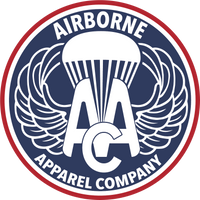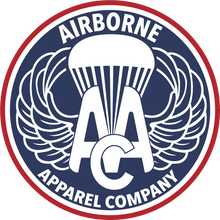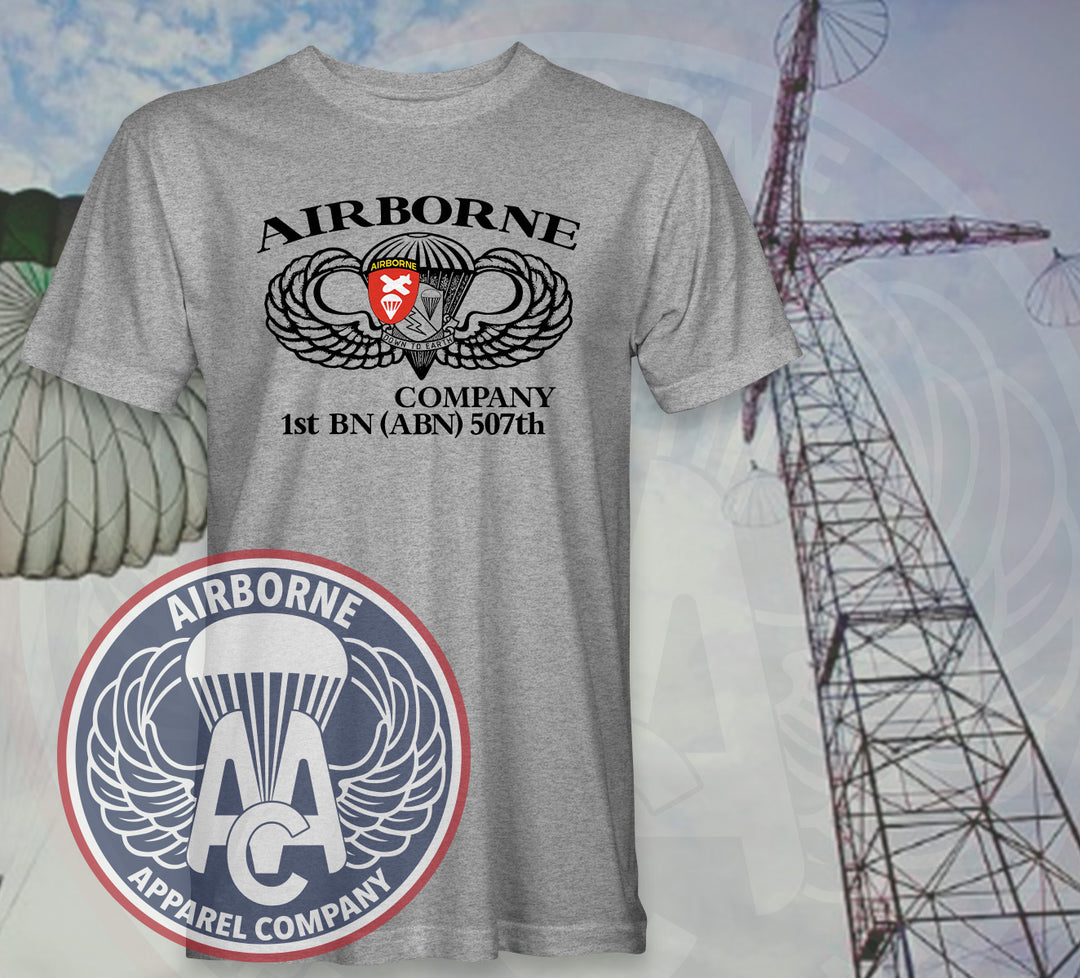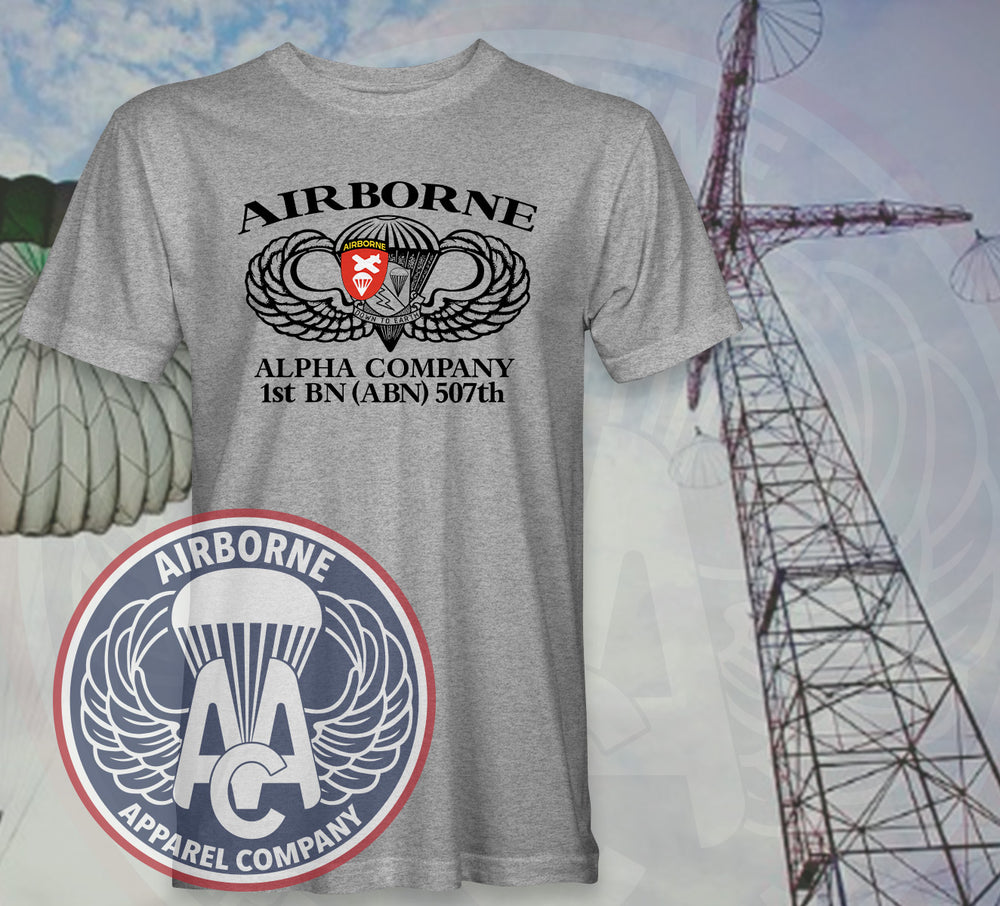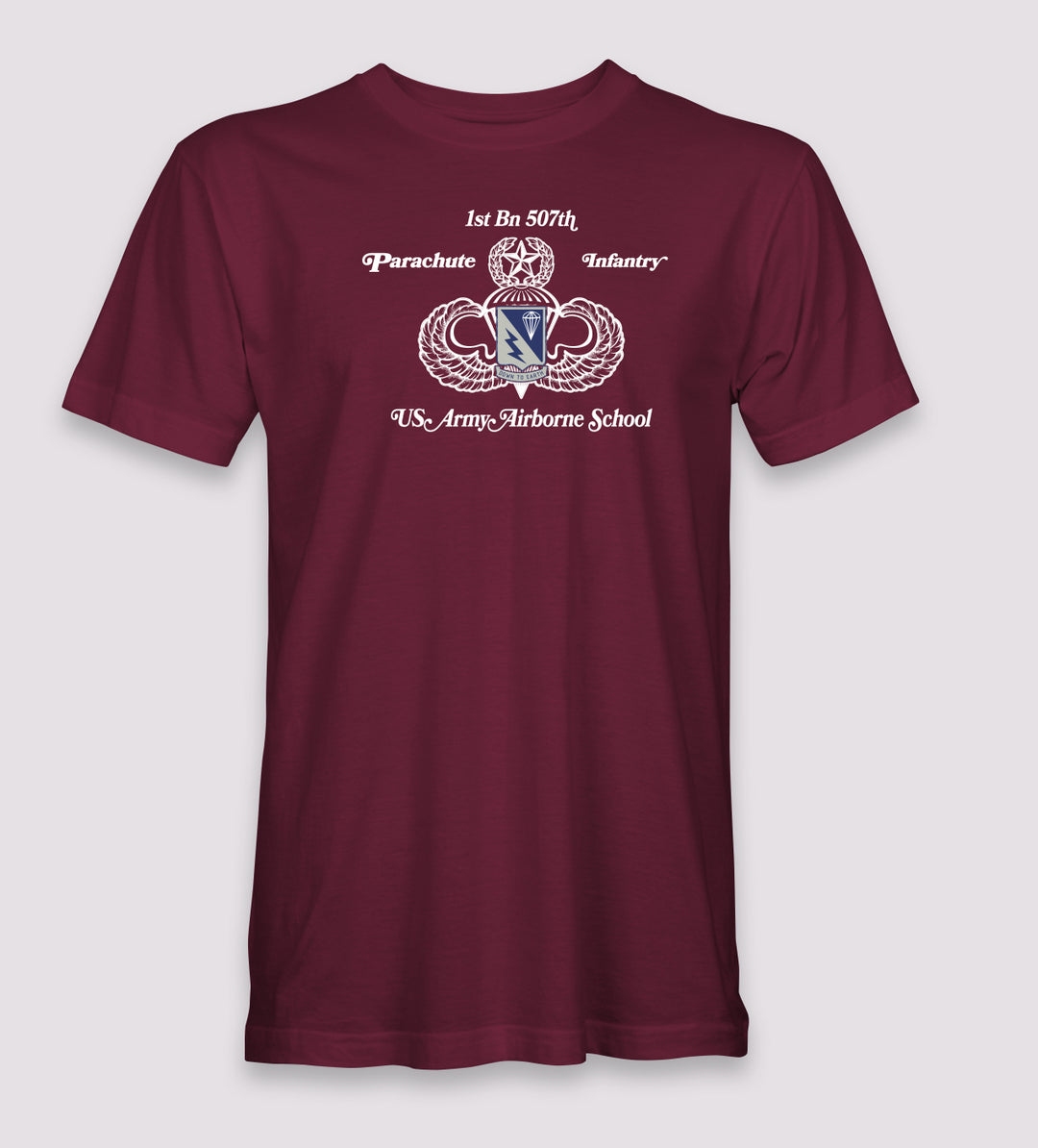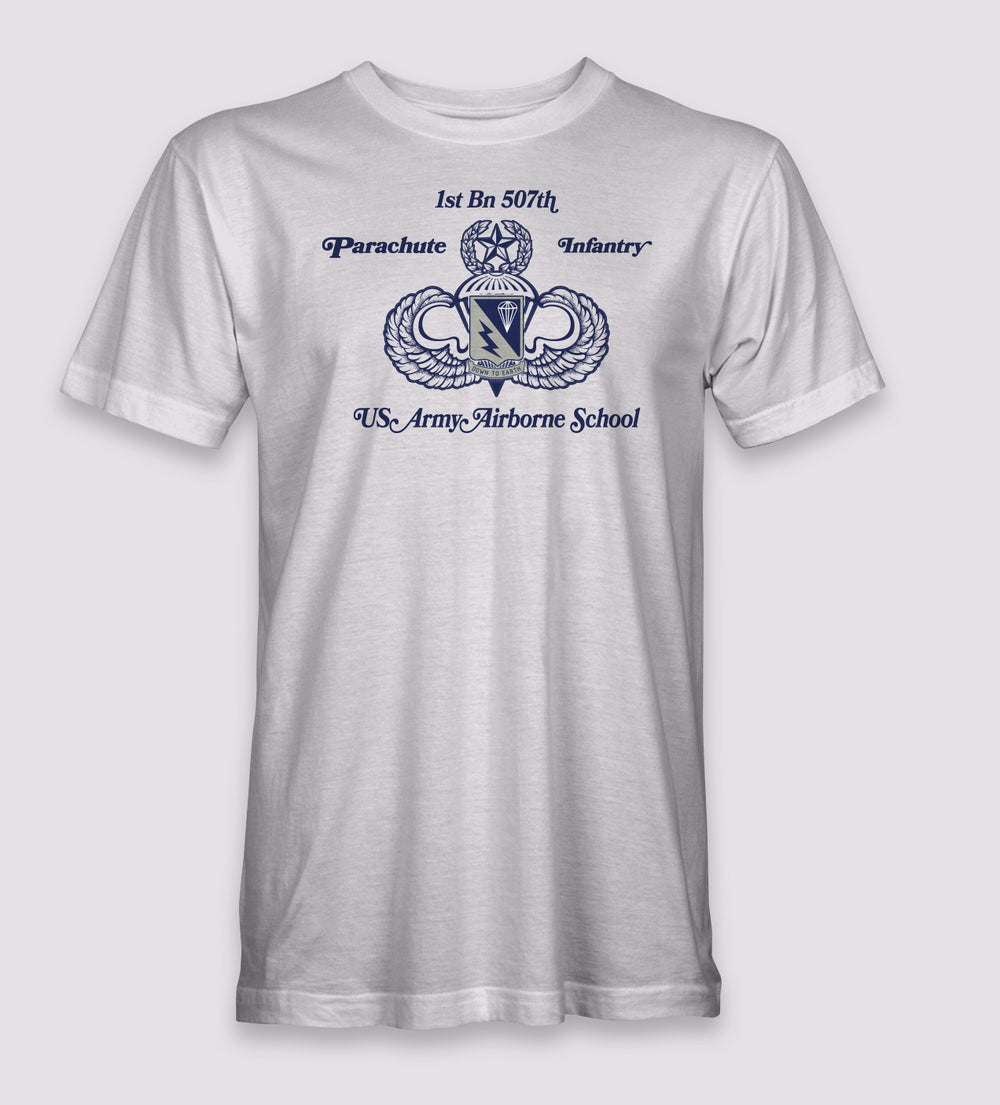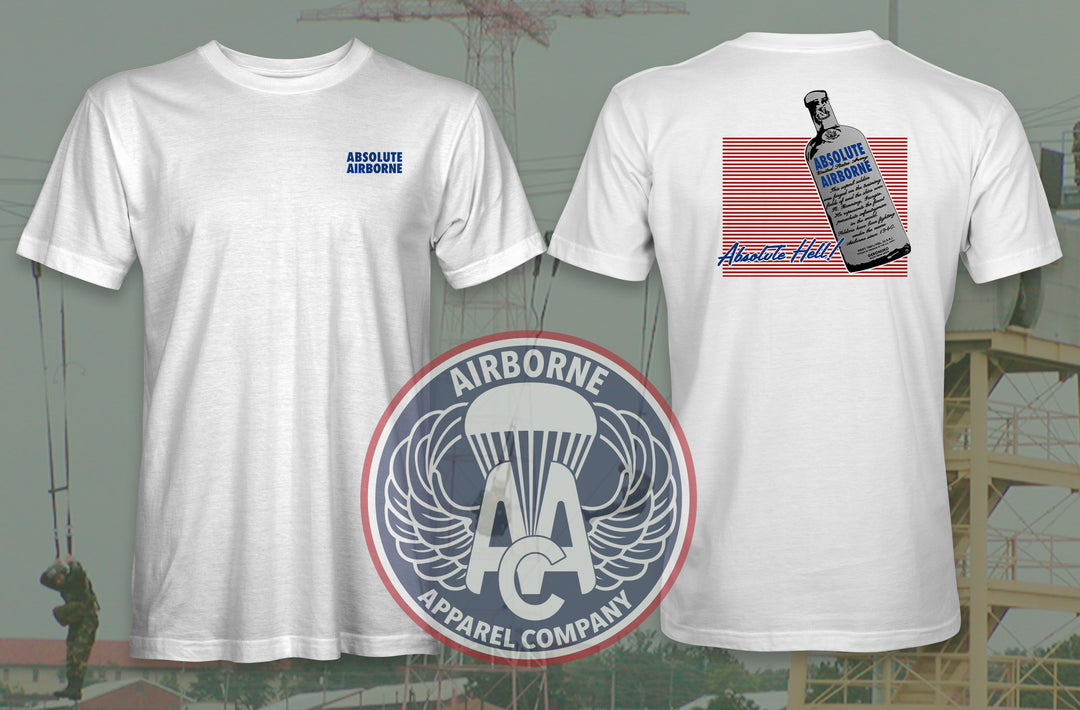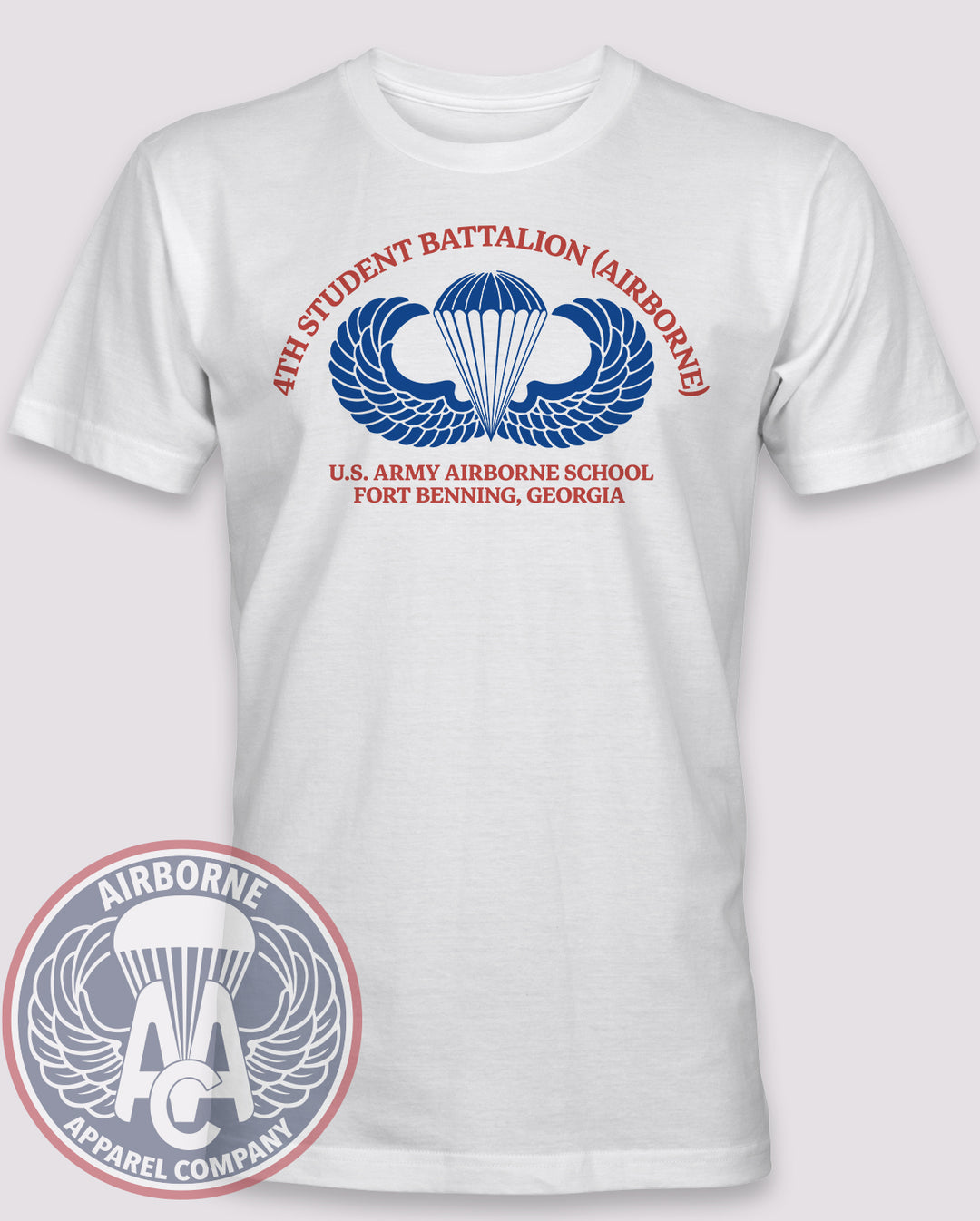The U.S. Army Airborne School at Fort Benning, Georgia is the home of American paratrooper training. Known as “Jump School,” it prepares Soldiers, Marines, Airmen, and allied troops to earn the coveted Parachutist Badge through rigorous instruction and five qualifying jumps. Since World War II, the Airborne School has forged the Army’s airborne legacy and continues to train thousands of paratroopers each year. Airborne Apparel Company is proud to offer reproductions and unique designs that celebrate the legacy of the U.S. Army Airborne School.
Origins and Early History
The U.S. Army Airborne School was born in the early years of World War II as the Army sought to develop a force capable of deploying from the sky directly into combat. In 1940, after the success of German and Soviet airborne experiments, the War Department approved the creation of a parachute test platoon. Fort Benning, Georgia, was selected as the training ground, and by 1941, the first American paratroopers were conducting jumps from C-33 aircraft over Lawson Army Airfield.
The success of these early experiments led to the establishment of the Airborne School, tasked with producing trained paratroopers for rapidly growing airborne divisions such as the 82nd and 101st. The school quickly became the central institution for parachute training, standardizing instruction and refining techniques that carried into combat operations in North Africa, Sicily, Normandy, Holland, and beyond.
Training and Curriculum
Commonly referred to as “Jump School”, the course is three weeks long and broken into phases:
-
Ground Week – Soldiers master parachute landing falls, exits, and the fundamentals of airborne operations.
-
Tower Week – Training advances with the 34-foot towers and the iconic 250-foot free-fall tower, instilling confidence and technique.
-
Jump Week – Students complete five qualifying parachute jumps, including one at night and one combat-equipped, to earn the Parachutist Badge (“Jump Wings”).
The school is open not only to U.S. Army Soldiers, but also to service members from the Marine Corps, Navy, Air Force, and international allied nations, underscoring the importance of airborne operations across militaries worldwide.
Legacy and Modern Role
Since World War II, the Airborne School at Fort Benning has trained hundreds of thousands of paratroopers, each earning the silver wings that symbolize courage, skill, and dedication. It remains a rite of passage for Soldiers entering elite formations such as the 82nd Airborne Division, 173rd Airborne Brigade, 75th Ranger Regiment, and Special Forces.
While the technology of aircraft and parachutes has evolved—from the T-5 parachute of World War II to today’s T-11—the essence of the Airborne School remains unchanged: instilling the spirit of airborne Soldiers willing to step into the unknown, trusting their equipment and their training.
Key Figures and Honors
-
Colonel William C. Lee is often remembered as the “Father of the Airborne” and played a central role in shaping early paratrooper doctrine.
-
Generations of American heroes, including many Medal of Honor recipients from airborne divisions, began their journeys at Fort Benning’s Jump School.
-
The school itself carries the legacy of every airborne campaign in U.S. history, from Sicily and Normandy to Vietnam, Iraq, and Afghanistan, where its graduates have served with distinction.
Airborne Apparel Company is proud to offer reproductions and unique designs that celebrate the legacy of the U.S. Army Airborne School.
